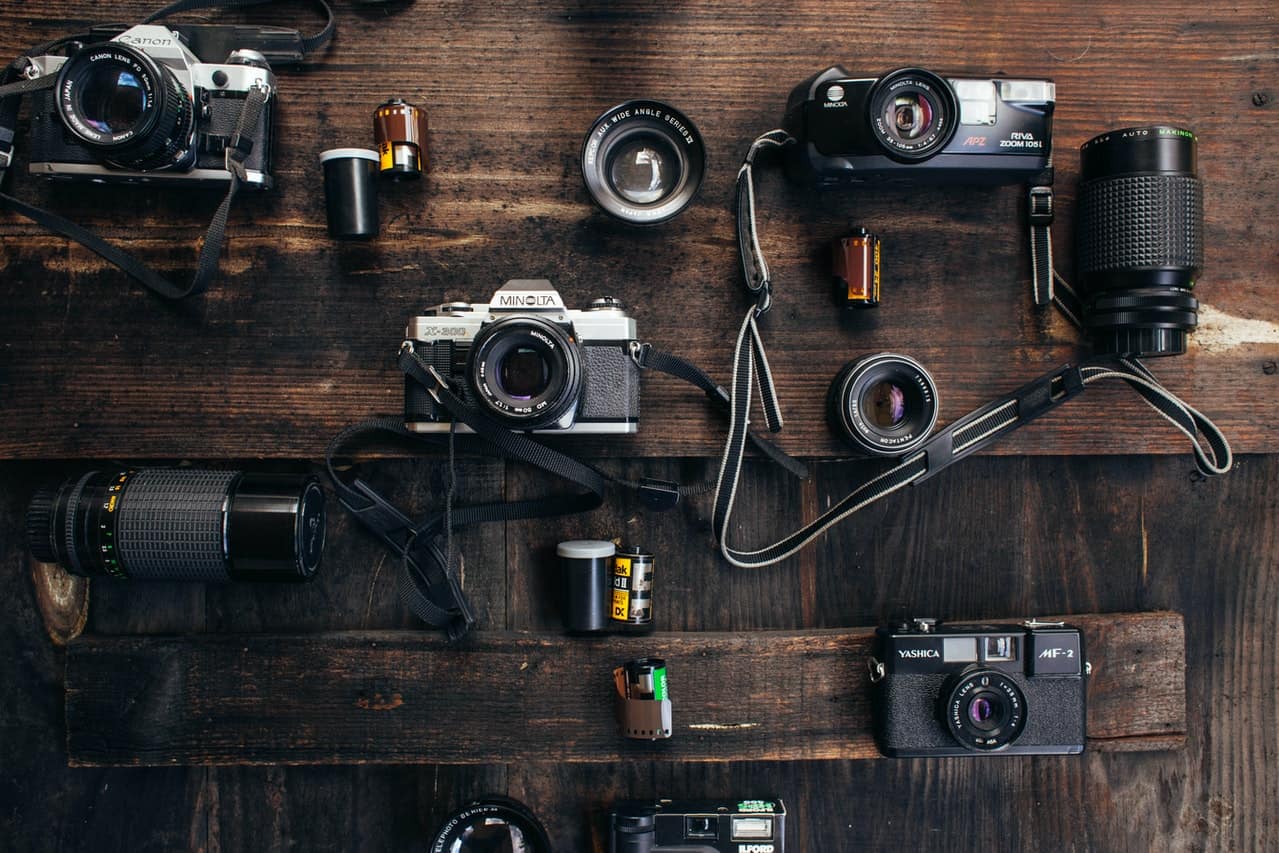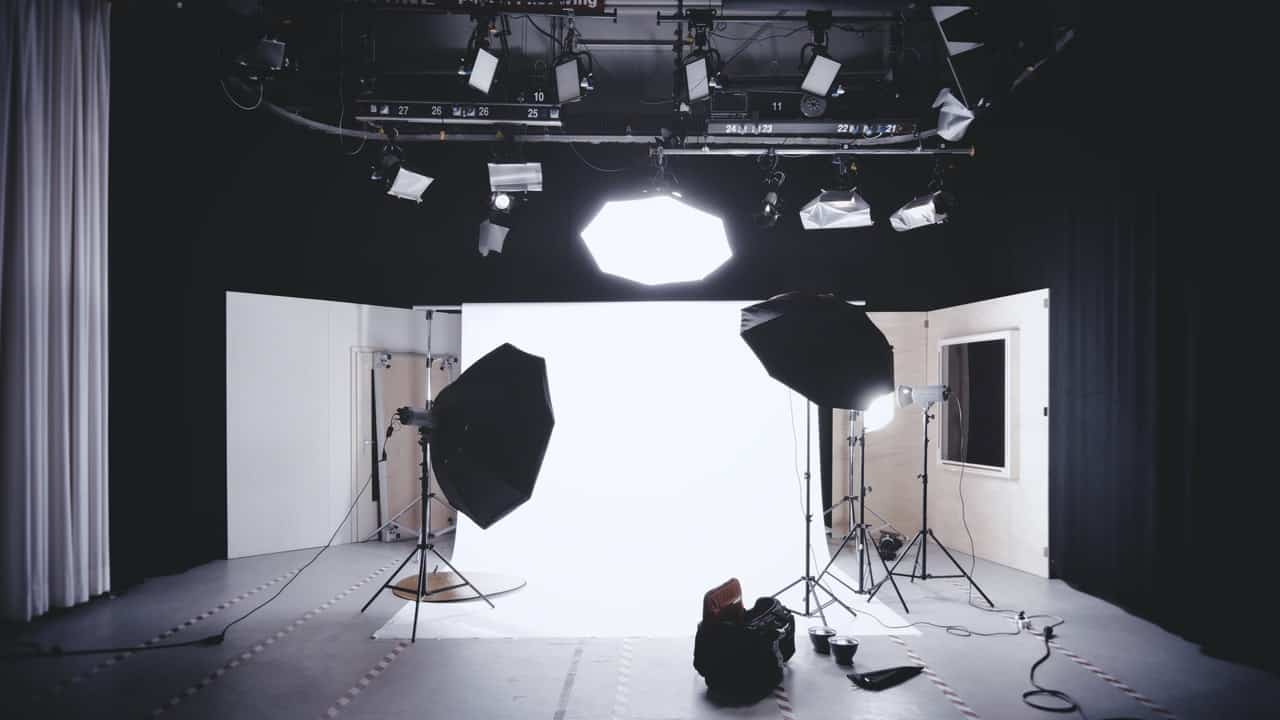When most people think of photography, they imagine a lone photographer out in the wild taking pictures of nature. However, what most people don’t know is that photography is a process that involves a lot of teamwork.
Photography is a great way to capture memories and share them with the world. It’s also an art form that can be used for a number of different purposes, from documenting buildings for architects to capturing the beauty of nature for artists.
In this article, we’ll look at how a photography studio works by deeply exploring its components – function, staff, equipment, etc.
What is a Photography Studio?
A photography studio is a workspace set up expressly to take pictures. It can be as simple as a corner in your house with a white sheet hung up to create a backdrop or an entire building filled with different props and backdrops. Either way, a studio provides a controlled environment for photographers to take their pictures.
The function of a photography studio is to provide a space for photographers to take pictures. This can be for any number of purposes, from taking family portraits to shooting commercial product photos.
A studio gives photographers a space where they can control the lighting and the environment, ensuring that they get the perfect shot every time.
Components That Photography Studio Generally Consists Of
On the surface, it may seem like all you need for a photography studio is a camera and a white wall. However, there are actually a few key components that every studio should have in order to create the perfect environment for taking pictures.
Photo Studio Staff
The staff of a photography studio typically consists of the photographer, the assistant, and the receptionist.
The photographer is the one who takes the pictures. They are responsible for coming up with the concepts for the shoot, setting up the equipment, and taking the actual photos.
The assistant helps the photographer with set-up and take-down and holds reflectors and diffusers during the shoot. They may also be responsible for taking test shots and operating the camera if the photographer needs help.
The receptionist is the one who greets clients when they come in and schedules appointments. They may also handle customer service inquiries and take payments.
If the studio is on a high level, there may be other special positions like the studio manager, digital technician, hair and makeup artist, etc. Greater studios will have a larger staff in order to accommodate more complex shoots.
It is important to have the right staff, but it is also important to have the right equipment.
Transport For Location Shoots
Some studios also have vehicles that can be used for location shoots. This is especially common for commercial photography studios, as they may need to travel to different locations to take photos of products or models. Having a studio vehicle makes it easy to transport all of the equipment from one location to another.
Location Scouting for different location shoots can be a great way to change up the scenery and add some variety to your portfolio. However, they can also be a lot of work, as you will need to set up and take down your equipment each time you move to a new location. Performing a location recce can also be very useful practice to ensure whichever studio you choose is the perfect setting for your work.
Perfect Space For Studio
The space of the studio also needs to be considered. The size of the space will dictate how much equipment can be accommodated and how many people can be on set at one time.
For example, a small photography studio located in East London may only have enough space for one photographer and one assistant. This studio type is typically used for smaller shoots, such as headshots or product photography.
On the other hand, a large studio may have enough space for multiple photographers, assistants, and hair and makeup artists. This studio type is typically used for larger shoots, such as fashion editorials or commercial work.
No matter what size studio you have, it’s essential to make sure that it is clean, well-lit, and organized. This will help create a calm and efficient environment for taking pictures.
Makeup and Wardrobe Area
Most studios also have a designated area for hair and makeup. This is where the hair and makeup artists will do their work before the photo shoot begins. This area should have good lighting and a large mirror so that the artists can see what they are doing.
There should also be a place to hang clothes to access the wardrobe easily. This area should be close to the shoot so that the models can quickly change clothes between shots.
Darkrooms and Developing Areas
In the days of film photography, darkrooms were an essential part of the process. This is where photographers would develop their photos, adjusting to the exposure and contrast until they achieved the perfect image.
Today, digital photography has largely replaced film, but darkrooms are still used by some photographers who prefer the traditional methods. Photos are developed using special chemicals that react to light in a darkroom.
The photographer must work in complete darkness, or the photo will be ruined. Darkrooms can be dangerous if proper precautions are not taken, as the chemicals can be highly corrosive. However, when used correctly, darkrooms can produce stunning results.
Graphic Design Spaces
Editing photos is an important part of the photography process. This is where the photographer or assistant will use software to make adjustments to the photo, such as cropping, colour correction, and retouching.
A studio should have a designated space for editing so that the photographer can focus on their work without distractions. This space should have good lighting and a large monitor so that the photographer can see the details of their photos.
Storage Areas
A photography studio needs to have a place to store all of its equipment, props, and backdrops. This may be a closet or a separate room entirely. It’s important to keep this space organized so that everything is easy to find when it’s needed.
Some studios also have a library of props and backdrops that can be used for shoots. This is a great way to save time and money, as it eliminates the need to buy or rent new props for every shoot.
Portfolio Display Rooms – Now Called Well-Designed Websites to Show Off Digitally
Many studios also have a display room where they can showcase their work. This may be a physical space, such as a gallery, or an online space, such as a website.
Display rooms are a great way to attract new clients and show off your work. They can also be used to sell prints or other products.
Websites are also a great way to showcase your work and attract new clients. A well-designed website can be a powerful marketing tool.
Shipping and Receiving Areas
If you sell prints or other products, you will need a place to ship them. A shipping and receiving area should be large enough to accommodate packaging materials and boxes. It should also have a shipping scale to calculate shipping costs accurately.
This area should be close to the storage space area so that it’s easy to find the products that need to be shipped.
Although all things are now digitalized, photographers also send edited images through software like WeTransfer, Google Drive, or DropBox.
Reception to Greet Customers
As soon as you walk into a photography studio, you’ll be greeted by a friendly receptionist. They’ll ask your name and what kind of session you’re looking for. Once they have your information, they’ll show you to the waiting room where you can have a seat and relax until your photographer is ready for you.
Depending on the type of session you’re looking for, your photographer may take some time to set up before they’re ready to start taking pictures. But don’t worry – the time will fly by! And before you know it, you’ll be in front of the camera and well on your way to getting the perfect picture.
Digitally Manage Studio on Social Media and Website
Nowadays, people are more likely to find a photography studio online through social media or the studio’s website than in person. A studio should make sure that its online presence is professional and up-to-date.
They should also post regular updates and specials so that potential clients know what they’re offering.
A studio’s website should be easy to navigate and contain all the information a potential client needs, such as prices, contact information, and a portfolio.
By keeping their online presence up-to-date, a studio can attract new clients and keep existing ones coming back for more.

Equipment and Software Photography Studios Use
There is a wide range of equipment and software that photography studios use. The type of equipment and software will depend on the kind of photography the studio specializes in.
For example, a studio specialising in portrait photography will need different equipment than a studio specialising in product photography.
Some of the most common pieces of equipment used by photographic studios include:
- Cameras
- Lenses
- Tripods
- Flashes
- Softboxes
- Diffusers
- Reflectors
- Backdrops
- Props
- Furniture
- Artificial lighting equipment
- Computers
- Editing software
- CRMs for photographers
Final Thoughts
There you have it! That’s a quick overview of how a typical photographic studio works. Of course, every studio is different, so be sure to ask about each studio’s specific photography services and amenities before you book your session.
And if you’re ever in the area, be sure to stop by our studio! We would love to show you around and answer any questions you may have.
